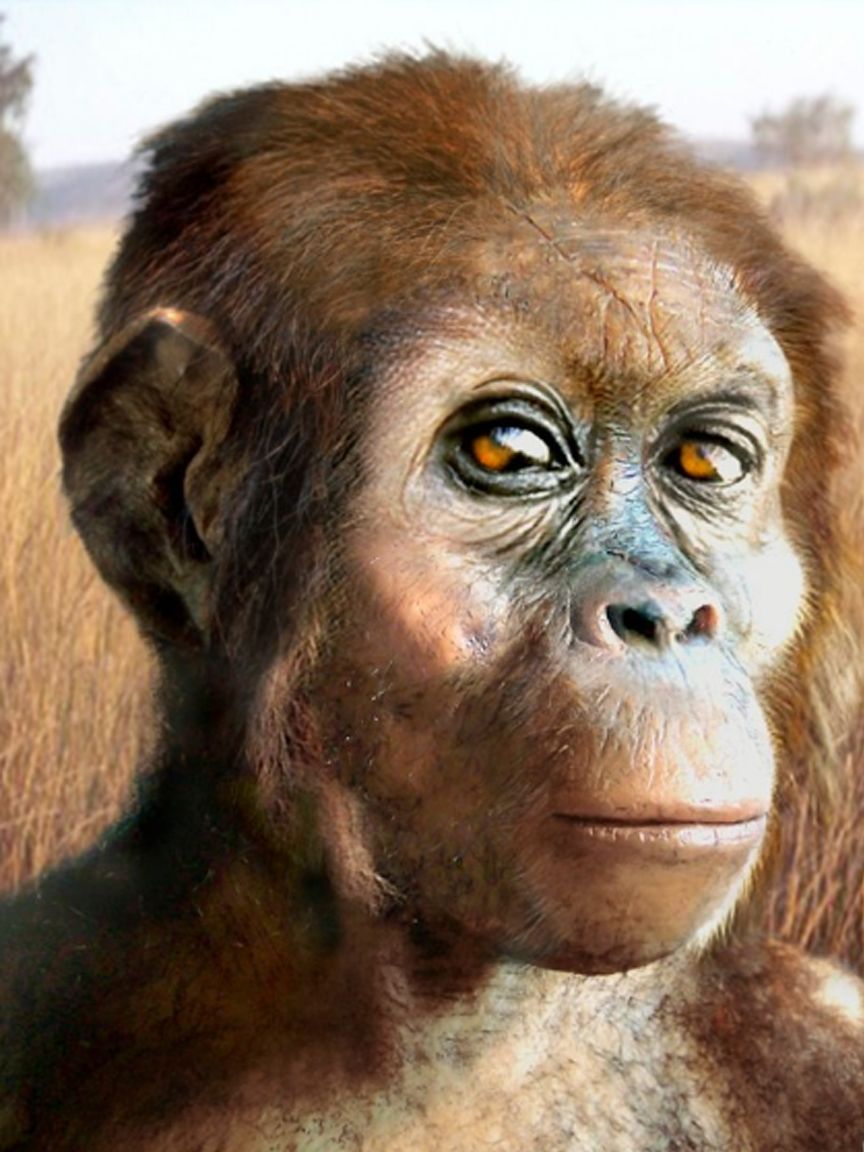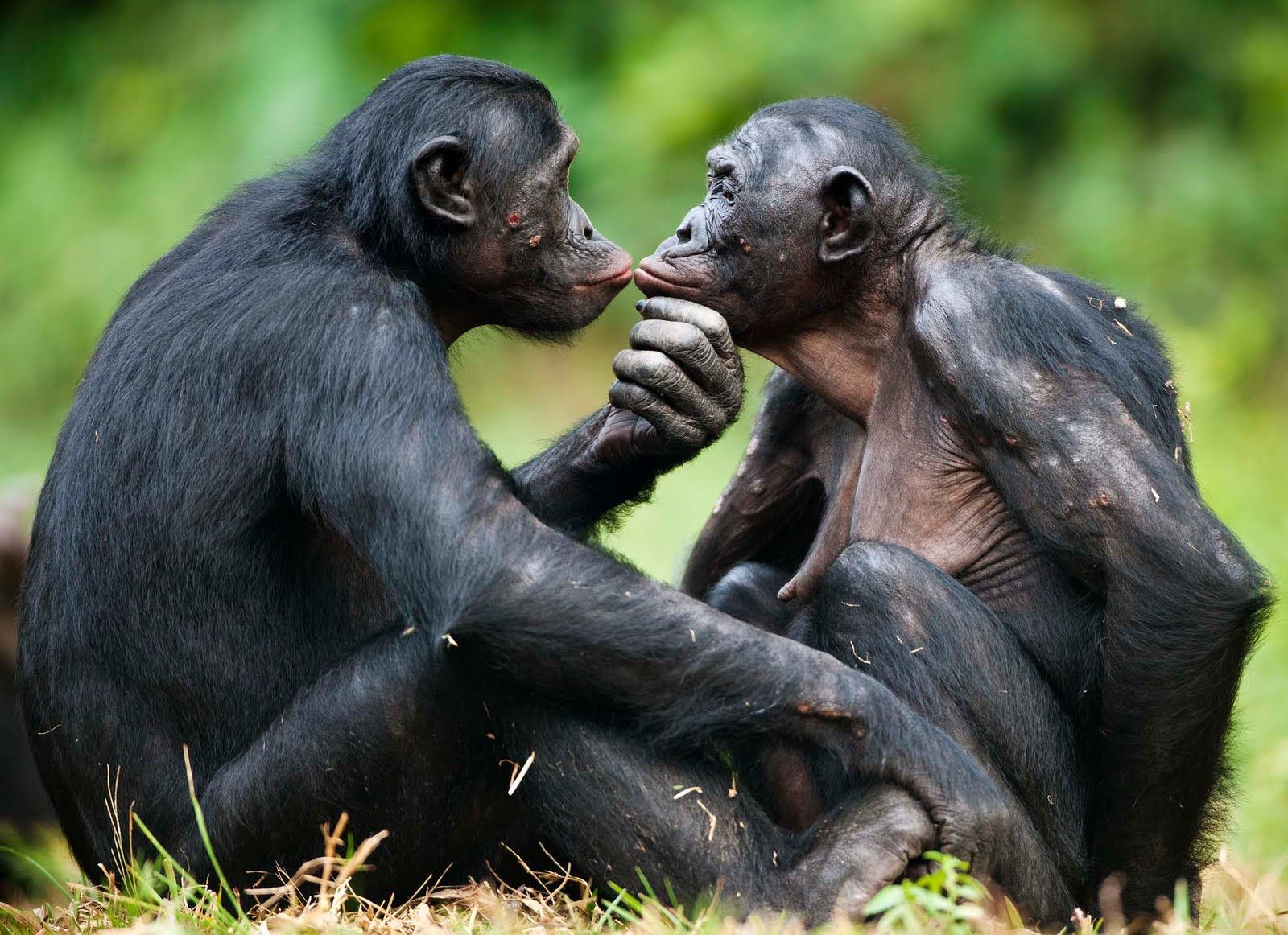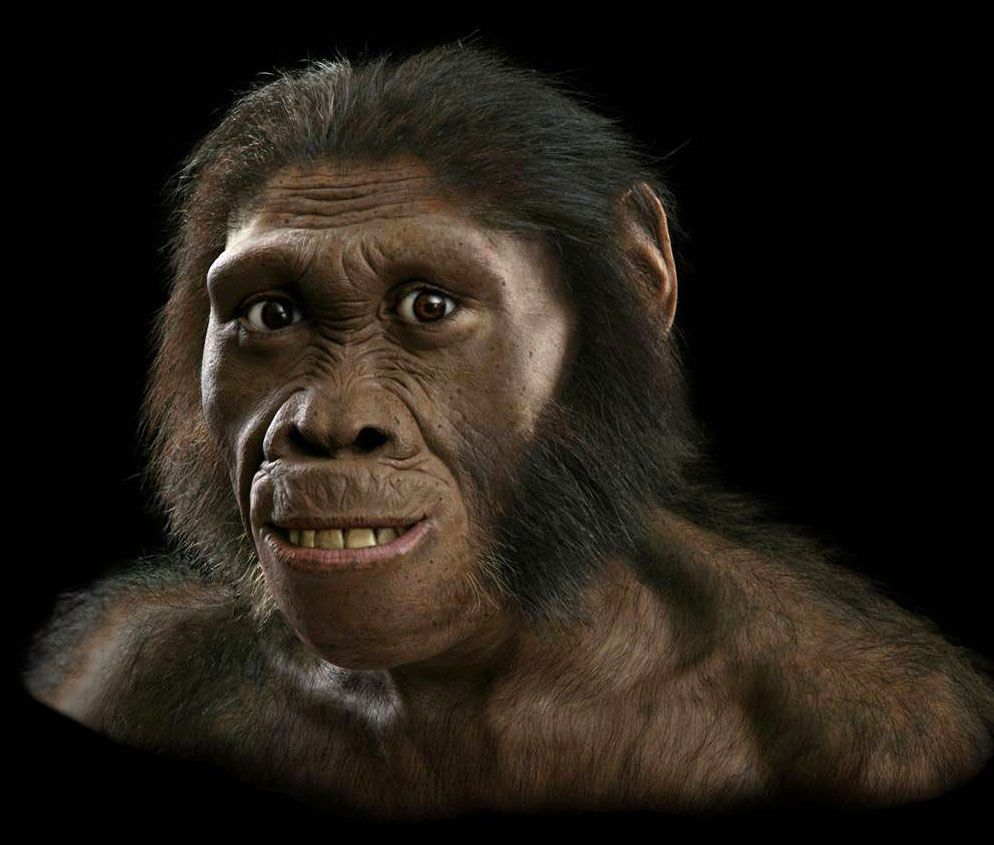Both the origin and the primate evolution, are very controversial topics that do not cease to draw the attention not only of experts, but also of most people. This is because it is difficult to ignore that our own origins are linked to these issues. So in this post we will delve into details.

Primate Characteristics
Both the origin and the evolution of primates are issues that have generated great debate and numerous conjectures since the beginning of the exciting investigations.
But if we want to know what are primatesDWe must bear in mind that the Primate Order is one of the largest and includes mammals such as lemurs, tarsiers, monkeys, apes and humans. However, it is one of the most threatened by the hand of man.
But the first thing we need to know is what the first primates and whatWhat traits do they share with the current ones? Well, in all the existing types of primates, a wide variety of traits coincide that distinguish them from the rest of the mammals.
Most of the primates of our time have arboreal habit and consequently have modified their body, in order to make their daily activity easier.
This is how their feet and hands have been modified to allow them to move through the branches. Except for people, it happens that in these Types of animals their big toes are well spaced from the other toes, allowing them to grip firmly.
His hands have also been adapted. However, such adjustments depend on each species, although the most important adaptation is the opposable thumb that allows them to better grasp things, just as we humans do.
But these are not the onlys primate characteristics. In addition, the hands of the members of this Order do not have claws or curved nails like other mammals. In your case they are flat with a blunt end.
specialized fingers
On the other hand, your fingers have touch pads and fingerprints. In their case, the importance is not for identification, but rather helps them to better hold on to the branches. Besides, both in the palms of the hands and in the fingers, they have something called Meissner's corpuscles. This adaptation gives them a highly developed sense of touch.
Another feature that distinguishes primates is that their center of gravity is located closer to the legs. These being the most important extremities during the march.
To this we must add that the heel bone is longer than in other mammals.
But one adaptation is valuable in primates, it is certainly their eyes. This is because, firstly, they are very large in relation to their body and, in the case of nocturnal primates, they are even more enormous.
These protruding and colossal eyes are due to the presence of the orbit, which is nothing more than bone behind the eye.
This happens contrary to other mammals that are friends of the night, which rely on different senses to walk in the dark.
Another important fact is that the optic nerves that have originated with the evolution of primates do not completely transpose into the brain, as in other species. Outside of primates, information entering the right eye is processed in the left hemisphere of the brain and vice versa.
senses and brain
In primates the case, this means that the information that enters through each eye is processed in both sides of the brain. Such evolution of the primates favors them with a much better discernment of the environment.
Another part of the body that differentiates primates is their ears. This introduces the call auditory blister, which is made up of the tympanic and temporal bones, enclosing both the middle and inner ear.
On the other hand, smell has been minimized, so this sense has ceased to be an outstanding feature of this Order.
But if there is something to be highlighted about the evolution of primates, it is undoubtedly what happened to their brain. It turns out that their size is not a determining factor, which is why many primates have smaller brains than any other average mammal.
To name one case, dolphins have a brain -in relation to their body- almost the same size as that of any primate.
What differentiates this part of the body from primates are two unrepeatable anatomical forms among all animals. These are the grooves of Sylvia and Calcarina.
Meanwhile, the jaw and teeth of the creatures of this Order have not been much modified. So they are made up as follows:
- 36 teeth
- 8 incisors
- 4 canines
- 12 premolars
- 12 molars
Origin and evolution of primates
to knowr how primates arose debWe travel 55 million years (Ma) back to meet the ancient creature most closely linked by heredity to modern primates, also called euprimates.
But it would not be until the beginning of the Miocene, 25 Ma ago, when species more similar to those of today begin to be seen.
Although there is a type of primates called archaics, which are estimated to have appeared in the Paleocene -that is, between 65 and 55 Ma- and are very similar to primates, a direct link with modern primates is currently ruled out.
This is because it is estimated that these archaic creatures separated from the group before the appearance of primates. Then they completely disappeared from the planet, in such a way that they are not linked to them.
According to the fossils discovered, the oldest reported euprimates already show adaptations for arboreal life. In such a way that they present many of the main features that distinguish this Order. These features include the skull, dentition and bone base.
Such remains were discovered in North America, as well as in Europe and Asia.
Instead, the first relics of these creatures in Middle Eocene times were found in China. These represent the earliest ancestors of the apes, but of course already extinct. Fossilized creatures of the now extinct castes of Adapidae and Omomyidae were later identified in Egypt.
The index of these fossils records all the types of primates there are, except the malagasy lemur. Of this there is no relic of his ancestors. However, there are fossilized remains of the lorisiforms, a sister group.
a distant divorce
These skeletons were found in Kenya and date back to about 20 Ma. But new findings confirm that they were already climbing this world 40 Ma ago. This clarifies that both lemurs and lorisiformes divorced more than 40 Ma ago, forming the suborder known as strepsirrhines.
Now, the haplorhines, another suborder of primates, come to appear in China in the middle Eocene, together with the infraorder of the tarsiers. While the apes, another infraorder, appeared in Oligocene times, 30 Ma before the present time.
In the closest case, that is, the Homo genus to which we belong, its appearance dates back to 7 Ma in Africa.
But the birth of bipedalism is still not clear. It is known as a Kenyan relic of which only a few elongated bones remain which would suggest some ability to move on two limbs.
The clearest fossil of the bipeds is dated at 3,4 Ma, so it is earlier than the famous fossil of Lucy or Australopithecus afarensis.
the anthropoids
Now continuing with primate classification, It should be noted that it is believed that the anthropoid monkeys evolved from prosimians in Oligocene times, which dates back to 40 Ma. The documentation of their fossils indicates that they existed in South America as well as in Africa and Asia.
In the case of the monkeys of the new world, they are part of the group called Platyrrhini, while those of the old continent are among the Catarrhini.
This difference occurred as a consequence of the isolation between America and Africa. This was when the land mass separated, thus creating the continents, which in turn generated the different evolutionary edges between both groups. A job that took millions of years.
But if platyrrhines are all arboreal, among their catarrhine cousins there are both arboreal and ground monkeys.
The orangutan, the gorilla and the chimpanzee are the catarrhines that have the greatest genetic affinity with us.
hominids
The great apes (hominoids). Through the genetic trace it is known that both chimpanzees and humans derive from the same ancestor. This fact is already around 6 Ma.
It is to be known that several species prospered from the branch that involves us to Homo sapiens. However, at this time we are the only survivors.
This bifurcation of the Hominini involves all types of this creature genetically closer to us than chimpanzees. They were mostly bipedal.
Our direct ancestors are located here, including Australopithecus and Homo habilis and Homo erectus. In addition to those who can be considered our "cousins", since they evolved parallel to us, the Neanderthals.
early hominids
Now we will see which were the first hominids of which there are records.
australopithecus
You may have already heard this name. It is a very famous hominid. It represents a variety that evolved in eastern Africa 4 Ma ago, although it disappeared 2 Ma ago.
They are of great value to reconstruct the history of the evolution of man, because it is estimated that the genus Homo evolved from an ancestor, 2 Ma ago. Despite this, Australopithecus have more features of great apes than modern humans.
paranthropus
It is known by all that evolution does not occur in a straight line. As far as this genre is concerned, it is known that it is an independent branch of our Hominini, although they are not considered our ancestors.
The Paranthropus lived about 2.5 Ma ago and ended 1 Ma ago, without leaving descendants, although they represented an important step in the evolution of primates at the time.
Homo
On the other hand, the beginning of the genus Homo (us), is set between 2.5 or 3 Ma. For many years, H. habilis was considered the "dean" of the genus, but in 2010 evidence of another species was discovered. aged: H. gautengensis.
In relation to the australopithecines, the specimens of the genus H. habilis show features closer to those of today's people. In this physiognomy, a less prognathic jaw stands out, in addition to a larger brain. However, H. habilis continued to resemble the more primitive Hominini, with its arms being longer in proportion to its body.
The name H. habilis should give us an idea of the intelligence of this creature. It turns out that it has to do with the stone tools that have been located next to their old bones. In such a way that what they named him "skillful man".
Then, continuing with the evolution of the primates, it is the turn of H. erectus. This is about 1.8 million years ago. Connoisseurs think that it arose in the eastern part of Africa and has the record of having been the first of the hominids to leave that continent.
His fossilized relics have been discovered in all that surely meant his long way: India, China, Java and Europe.
resemblance to modern man
Almost at the end of primate evolution, H. erectus, unlike H. habilis, already showed similarities in many Characteristics of the human being current. They were larger, as they could reach no less than 1.85 m in height.
Furthermore, the physical difference from the opposite sex was less visible than in their more primitive cousins. Whereas his brain was bigger, about 775 or 1,100 cc. This is very close to the 1,130 or 1,260 cc of us today.
With regard to facial features, H. erectus took another step in the evolution of primates. Turns out it had a downward-sloping nose, just like ours.
This aspect is believed to be a change to survive in cold areas. This is because this helped to warm the air before it entered the lungs.
Thanks to the discovered remains, it is thought that H. erectus was the first hominin to use fire and have a stable “house”. Its extinction is estimated to have occurred about 50 thousand years ago, although without a doubt it was one of the creatures that most advanced in the evolution of primates, until it reached the people of our time.
Archaic humans and Homo sapiens
Following the trail of the evolution of primates, we are approaching the end of the chain, where modern man already originates. Far away are the signs of the most primitive monkeys, or are we wrong?
But let's see how our story ends.
It is thought that our species is an evolution of H. erectus, something that would have happened 500 years ago. The remains discovered from those distant times are diverse, being very similar to Homo sapiens, although with marked differences in their anatomy. These are the so-called archaic humans.
Archaics differ from modern humans in several ways, first of all in a thicker skull. They also have a prominent brow ridge and a faint chin.
Some of these species managed to survive in the world until between 30 and 10 years ago. Such a thing gives us to understand that we get to live with them for a certain time.
Finally, at one end of this long path of primate evolution that has yet to continue, it must be pointed out that there is no scientific agreement on archaic humans. However, there is a trend among paleontologists, who define them as a subspecies of H. sapiens.
According to the nomenclature of Taxonomic classification of animals, a subspecies is named by appending the subspecies name to the scientific term. In this way, modern man would be Homo sapiens sapiens, while the archaic are established as Homo sapiens neanderthalensis, Homo sapiens heidelbergensis and so on for each case.
However, the controversy does not end. But we must not forget that even in the face of so many differences, we all make up the same species.






